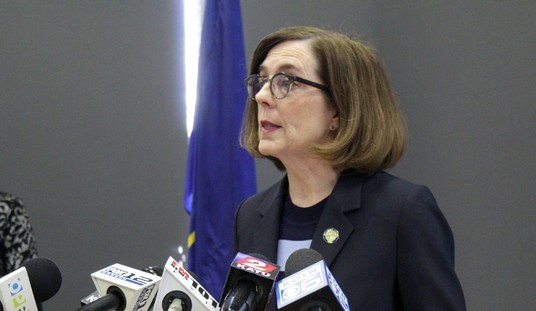“The San Juan that we knew yesterday is no longer there,” the city’s mayor declared today after Hurricane Maria’s Category 4 winds and rain finally left the island of Puerto Rico. “Once we’re able to go outside,” Emergency Management Director Abner Gómez Cortés told reporters, “we’re going to find our island destroyed.” The entire island is without power, and it could be as long as four to six months before Puerto Rico can restore its electricity:
Hurricane Maria is likely to have “destroyed” Puerto Rico, the island’s emergency director said Wednesday after the monster storm ripped roofs off buildings and flooded homes.
Intense flooding was reported across the economically strained U.S. territory, particularly in San Juan, the capital, where many residential streets looked like rivers. …
San Juan Mayor Carmen Yulín Cruz told MSNBC that the devastation in the capital was unlike any she had ever seen.
“The San Juan that we knew yesterday is no longer there,” Yulín said, adding: “We’re looking at four to six months without electricity” in Puerto Rico, home to nearly 3.5 million people.
It’s more than just having the lines knocked down, the Washington Post reports. The damage went across the entire electrical grid. That will now be FEMA’s top priority, and for good reason:
Puerto Rico’s vulnerability to tropical cyclones has been driven home in the past two weeks as first Irma and then Maria have howled into the Caribbean. The back-to-back nature of the storms has had one minor upside: Some 3,200 federal government staffers, National Guardsmen and other emergency personnel overseen already were in Puerto Rico when Maria approached. …
The federal recovery effort, FEMA administrator Long said, will attempt to restore power to Puerto Rico and the U.S. Virgin Islands as quickly as possible but in a way that makes the grid less vulnerable to similar disruptions. The power grid, he said, “is a fragile system in both territories. It’s going to be a long and frustrating process to get the power grid up.”
The lack of electricity will multiply the humanitarian issues in Puerto Rico and the Virgin Islands. Food will rapidly spoil without refrigeration, especially in the tropical weather of that region. Communications will get severely disrupted from the lack of power, even apart from all the cell towers being damaged or destroyed, and cell phones have become the primary means of communication in Puerto Rico. The island’s emergency management team is calling for the quick importation of generators to assist in recovery, but fuel distribution for generators and for the vehicles needed to get the fuel to distribution points are all impacted by the power loss. That means that hospitals, clinics, and shelters will have huge impediments to the delivery of care.
There is an opportunity in this crisis, however. Puerto Rico’s power infrastructure was already “fragile,” as some are describing it now. As they rebuild, Puerto Rico and the US have an opening to force some modernization and hardening of power distribution on both islands, such as moving lines underground to the extent possible rather than stringing them overhead. The circumstances of total destruction will force the replacement of old equipment too. Maria will not be the last major hurricane to hit the island, and this allows for everyone to properly prepare for that eventuality — as long as they can also get power restored quickly enough to save lives.
Maria has now picked up a little more speed and is aiming at the Dominican Republic. After that, forecasters expect the hurricane to go out to the open sea and eventually spin itself out. That may change without much notice, so the Atlantic seaboard will need to keep a sharp eye on the storm, and perhaps think about hardening up their own systems where needed.








Join the conversation as a VIP Member